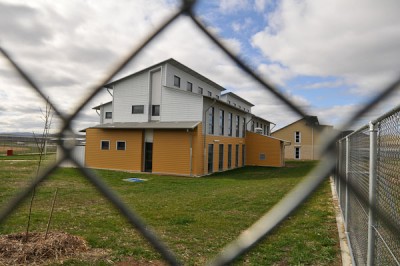 Has Chief Minister Katy Gallagher lost her nerve under pressure from the prison union to abandon a needle-and-syringe program at the Alexander Maconochie Centre? GINO VUMBACA argues why she shouldn’t…
Has Chief Minister Katy Gallagher lost her nerve under pressure from the prison union to abandon a needle-and-syringe program at the Alexander Maconochie Centre? GINO VUMBACA argues why she shouldn’t…
NO-ONE could rightly think that introducing measures to tackle HIV, hepatitis and drug use is ever easy.
Yet in Australia, we have a remarkable record of achievement in this area.
The reward for our innovation, courage and success is hard to measure at times, but we do know that Australia has one of the lowest rates of HIV amongst injecting drug users.
This has saved thousands of lives and billions of dollars. This success has also meant that the impact of HIV has been felt by far fewer people and families here than in nearly all other countries around the world.
At a time in the ACT where the first prison-based needle-and-syringe program in the country has been proposed, it is important to remember that initiatives we now accept as logical and necessary, such as widespread condom availability, needle-and-syringe programs and graphic educational campaigns (remember the Grim Reaper) all began their journey to acceptance in a blaze of controversy and vehement opposition.
Since 2001, the Australian National Council on Drugs has held a position of supporting prison-based needle and syringe programs. The council assessed the available evidence at the time, including ongoing injecting drug use in our prisons and the proven effectiveness of the needle-and-syringe programs in the community and overseas prisons. The evidence has become even clearer and stronger since then.
Supporting a prison needle-and-syringe program in the ACT prison is not “throwing in the towel” to drug use. It is accepting the uncomfortable reality that drugs are available in prisons and always have been.
Unless we are prepared to accept a system that among a host of unacceptable measures includes a complete body cavity search of every man, woman and child that enters a prison, regardless of their age or position, there will be drugs in prisons. This is not unique to Australia. Indeed, it is impossible to think of a country anywhere that would declare its prisons completely drug free and believe it to be true.
In so many areas of life we accept reality rather than just the ideal. It would be great if prisons were drug-free centres of rehabilitation, where no-one re-offended or engaged in drug use after release.
That can still be an ideal, but we have to act on what happens in the real world. And that means lots of people with a drug dependency being locked up and limited resources for treatment as a result. Changing this investment structure would be far smarter.
The prison needle-and-syringe program also raises concerns of safety for people working in this system and this is a very valid concern.
The ACT Government’s commissioned Public Health Association Australia’s report by its CEO Michael Moore has correctly proposed various models that will restrict the opportunities for this to occur. An effort to reduce violence is what’s also needed.
A dozen columns need to be written about the pressing need to start to address the transmission of hepatitis C as a result of drug use in this country.
Suffice to say, the numbers are staggering; with more than 200,000 people already living with chronic hepatitis C.
In prisons, hepatitis C remains an overwhelming problem that must be addressed. Estimates range as high as 40 per cent for male prisoners and 70 per cent for females.
Couple this situation with the excellent return on our investment in needle-and-syringe programs in the community, which recent research credits with preventing almost 100,000 new hepatitis C infections in the last 10 years, and a 0.1 per cent rate of HIV amongst people who inject drugs, rather than the 14 per cent it could have been without the program.
Then, quite simply, a prison needle-and-syringe program becomes critical for any effective response to hepatitis C and HIV.
This is why many around the country are quietly hoping that the ACT will show the rest of Australia that we have not lost our drive and determination for innovation in public health.
Gino Vumbaca is the executive director of the Australian National Council on Drugs
Who can be trusted?
In a world of spin and confusion, there’s never been a more important time to support independent journalism in Canberra.
If you trust our work online and want to enforce the power of independent voices, I invite you to make a small contribution.
Every dollar of support is invested back into our journalism to help keep citynews.com.au strong and free.
Thank you,
Ian Meikle, editor




Leave a Reply